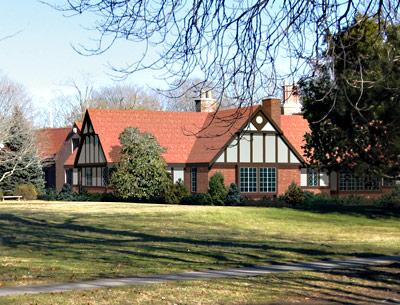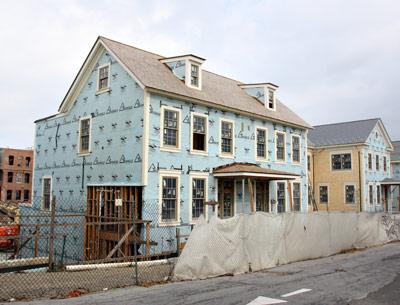Looted Art: Will the List Be Found?
Looted Art: Will the List Be Found?

As soon as she heard the startling news last week that German police, searching a dusty Munich apartment owned by a 79-year-old recluse named Cornelius Gurlitt, had stumbled on a treasure trove of some 1,400 artworks confiscated by the Nazis during World War II, Barbara Lipman-Wulf of Sag Harbor thought of the story her late husband, the sculptor Peter Lipman-Wulf, had told her.
Peter and his brother, Hans, Berlin-born of comfortable, assimilated Jewish parents, were in their 30s when they left Germany in 1933 to live in France. “They had read ‘Mein Kampf,’ ” Ms. Lipman-Wulf said tersely. Their parents, Fritz and Lucy Lipman-Wulf, stayed behind.
Nine years later the parents were eking out a precarious existence in their flat, now full of displaced co-religionists who slept wherever they could find space. A minor Nazi functionary, with whom the couple were on good terms, lived in the same building. This official “took Fritz aside one evening,” said Ms. Lipman-Wulf, “and told him, ‘I want to warn you, this week this house will be made judenrein, and you must go to the bus station.’ ”
Late that night, the story goes, Fritz took the family’s art collection off the walls and brought the paintings, wrapped in sheets and paper, across the street to the apartment of a family friend — one Wolfgang Gurlitt, a cousin of Cornelius Gurlitt’s father and, like him, an art dealer.
Wolfgang “promised to save it for Peter and Hans in an air raid-safe place,” Ms. Lipman-Wulf said. Wolfgang Gurlitt probably helped Fritz Lipman-Wulf carry the artworks.
The next evening Fritz and Lucy Lipman-Wulf committed suicide. They were in their 60s.
Who were these Gurlitts, whose lives and those of the Lipman-Wulfs intersected so fatefully?
Cornelius Gurlitt, who dropped out of sight after the news of his hoard was revealed to a stunned art world, told Bavarian authorities he had inherited the works from his father, Hildebrand. Father and son came from a long line of artistic forebears: composers, musicologists, architects, painters. Many paintings by Louis Gurlitt, Hildebrand’s fa ther, were found in the flat among the masterpieces by Picasso, Matisse, Chagall, Renoir, and some of the great German Expressionists. The German weekly newsmagazine Focus, which first reported the find, estimated its value at $1.3 billion.
Hildebrand Gurlitt had been a collector and dealer in Renaissance and early 20th-century Modernist art, the latter denounced by Hitler as “degenerate” and ordered removed from state museums in the late ’30s. Hildebrand was reportedly a member of the National Socialist Party early on, before it came out that he had a Jewish grandparent; under the Nuremberg race laws, he was struck from the rolls as being one-quarter Jewish. Years later, though, he was recruited by Joseph Goebbels, chief of Hitler’s propaganda ministry, to market confiscated and stolen works of art abroad, the Nazis having determined, as Goebbels wrote in his diary, to “make some money from this garbage.”
Hildebrand Gurlitt was arrested as a Nazi collaborator at the war’s end and his collection came into the custody of allied troops. He spent five or six years trying to recover it, stressing his Jewish roots and claiming to have been a victim of the times. Despite doubts about his wartime activities and his veracity (“He does not seem very open-hearted,” reported an American officer who interviewed him in December 1947), the entire collection, including a previously unknown Chagall painting, “Fabulous Scene,” was released to him by 1951. The Chagall was among the trove discovered in his son’s apartment, where officials also found a number of empty frames. Apparently Cornelius Gurlitt sold pictures as needed over the years. (The 1947 interview with Hildebrand, who died in an auto accident in 1956, can be found on the website lootedart.com.)
Wolfgang Gurlitt’s role during the Nazi era is somewhat murkier than his cousin Hildebrand’s. He too was involved in marketing looted works of “degenerate” art abroad, and is known as well to have been a procurer of material for a planned “Fuhrermuseum,” to be built in Linz, Austria, near Hitler’s birthplace. “On the basis of various auctions in the Dorotheum in Vienna,” says Wikipedia, “it is clear that he was also involved with the sale of expropriated Jewish property.”
Wolfgang took Austrian citizenship in 1946. By January 1956, he had become the director of the New Gallery of the City of Linz/Wolfgang Gurlitt Museum. Peter and Barbara Lipman-Wulf found him there in 1961.
“He claimed all the [Lipman-Wulf] art had been destroyed through air raids in the storage houses,” Ms. Lipman-Wulf said on Friday. “We had some doubts. We didn’t trust him. He may have given the art to his family.”
Her husband, whom she said had “a photographic memory,” had been awarded $600 a month restitution in 1958 after submitting a list of his family’s lost property to the West German Federal Republic. “I think the list of the artwork must have helped,” said Ms. Lipman-Wulf.
That list, she said, has long since been lost. Or has it? “All his restitution correspondence was destroyed in a fire many years ago in New York City,” said his widow, but that the list was among the papers is uncertain. Even if it was, there may be a copy somewhere, in the city, perhaps, or in Germany.
If it exists, Ms. Lipman-Wulf, in light of the Munich discovery, is moving heaven and earth to find it. She has asked Frank Mecklenburg of the Leo Baeck Institute, an international center with offices in Manhattan devoted to the history of German Jewry, to comb through the archives of his father-in-law, who was Peter’s New York lawyer at the time he applied for restitution.
“The institute has Peter’s papers and his artwork, which I gave them over the years,” she said. “So they are looking, too.”
Last Thursday Ms. Lipman-Wulf e-mailed Meike Hoffmann, the German art historian who for the past 18 months has been cataloguing the Gurlitt trove, telling her the story of the Lipman-Wulfs and asking for advice. The historian, an expert in Modernist art, e-mailed back just hours later, providing the name of the municipal institution where Peter must have written for restitution and the names of two people who might be of help. The collection is now in a customs house at an undisclosed location near Munich, where Ms. Hoffman has been studying it.
“We will also check with [Peter’s] Swiss daughter in Lausanne, maybe finding the original or a copy of the list,” Ms. Lipman-Wulf said. She remembers being told that the family collection included works by Gustav Klimt, Egon Schiele, Max Beckmann, and “other avant-garde artists,” all of whom would have been on Hitler’s proscribed roster of “degenerates.” The cache found in Munich, in the bohemian Schwabing district where Hitler himself lived when he was an aspiring artist, is known to include at least one painting by Beckmann.
As of yesterday German officials had not released a full inventory, despite worldwide pressure to put a list online. “What is frustrating is the drip-feeding of information,” the arts editor of the BBC commented this week. “There still seems to be a cloak of secrecy around the whole affair.”
While Germany is said to have anticipated that people with a claim to ownership would contact the authorities directly, Focus reported on Sunday that Berlin had decided to send legal experts to Munich to help the Bavarian Justice Ministry resolve “myriad ownership issues.”
Ironically, many of the paintings — once vilified by the Nazis, now reckoned almost beyond price — could be returned to Cornelius if the rightful heirs are not found.
“We have had a shock,” said Ms. Lipman-Wulf, who is in her 80s, “but also a tiny bit of hope. We know how difficult it will be.”






